<< Previous | Displaying results 6051-6060 of 6769 for "" | Next >>
The SS ordered Jews to undress prior to the mass shootings at the nearby Babyn Yar killing site. In two days, September 29-30, 1941, they shot more than 33,000 Jews from Kyiv (Kiev). This photograph, taken by a member of a German Propaganda Company, shows just some of the belongings of these victims. Kyiv, German-occupied Soviet Union, After September 30, 1941.
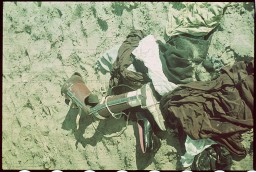
Clothing belonging to Jewish victims murdered by the SS at the nearby Babyn Yar killing site. Prior to the mass shootings, the SS ordered Jews to undress and leave their belongings. They then marched or drove the victims to the killing site. A German photographer took this image within days of the mass shootings. Kyiv (Kiev), German-occupied Soviet Union, after September 30, 1941.
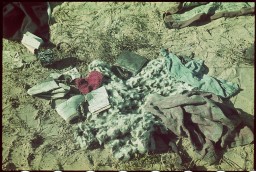
An SS guard examines piles of clothing belonging to the more than 33,000 Jews murdered at the nearby Babyn Yar killing site. The SS forced the victims to undress and leave their belongings behind. The Jews were then marched or driven to the shooting site. Kyiv (Kiev), German-occupied Soviet Union, after September 30, 1941.
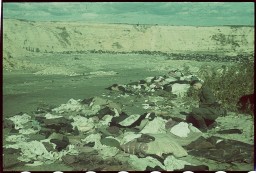
SS men search through massive piles of clothing belonging to the more than 33,000 Jews murdered at the nearby Babyn Yar killing site. The SS forced the victims to undress and leave their belongings behind. The Jews were then marched or driven to the shooting site. Kyiv (Kiev), German-occupied Soviet Union, after September 30, 1941.
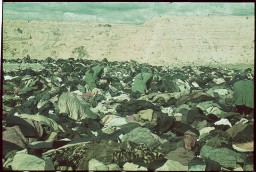
SS men or German police officers on one of the sandy cliffs near the Babyn Yar killing site. Below them are unidentified men, perhaps Soviet prisoners of war or local Ukrainians, who sorted through the huge piles of clothing belonging to the more than 33,000 Jews from Kyiv (Kiev) who were murdered at Babyn Yar. Kyiv, German-occupied Soviet Union, after September 30, 1941.
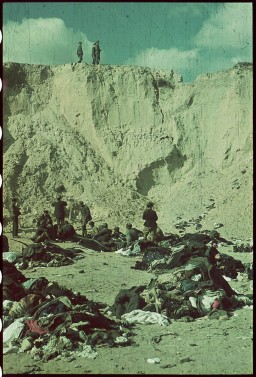
Léon Degrelle, an extreme right-wing Belgian politician and Nazi collaborator. Photo dated 1933–1945.
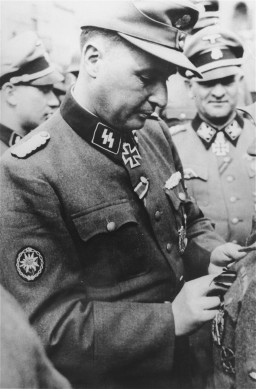
Staff member Johann Niemann in his room at the Bernburg "euthanasia" center. For the picture, he turned his family photo on the bedside table in the direction of the photographer. Niemann later became the deputy commandant of Sobibor, one of three "Operation Reinhard" killing centers.
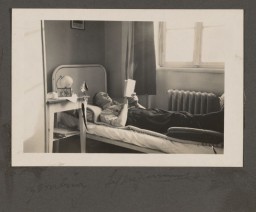
Belgian politician Léon Degrelle (center) stands in formation with fighters from the Belgian Volunteers who are on their way to fight in the Soviet Union. Belgium, August 15, 1941. During World War II, Degrelle founded a collaborationist military force that fought on the eastern front.
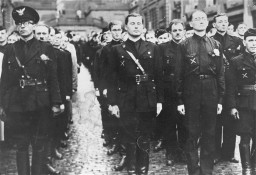
Lucie Lind shopping in an open-air market in Lwów, Poland, sometime in the 1930s. Lucie was born into an affluent Jewish family on January 23, 1909. At the time, Lwów (Lemberg) was part of the Austro-Hungarian Empire. Lucie was educated in Vienna. Before World War II, she was a housewife. Her first husband was a well-known artist throughout Europe. The couple’s daughter was born in 1936. Lucie’s fashionable clothes, hat, and gloves are typical for middle or upper class women living in Poland at the…
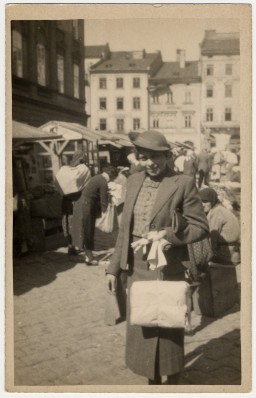
Wartime portrait of Andrzej Klimowicz, Poland. Andrzej Klimowicz (1918–1996) aided and rescued Jews in Warsaw throughout the duration of the German occupation of Poland. He eventually became a member of the Council for Aid to Jews (codenamed “Żegota”), a clandestine organization that coordinated efforts to save Jews from Nazi persecution and murder. Under the auspices of Żegota, Andrzej played a role in providing Jews in Warsaw with forged identity papers and hiding places outside the walls of the…
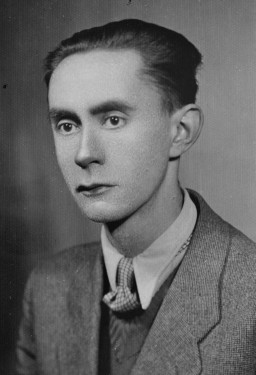
We would like to thank Crown Family Philanthropies, Abe and Ida Cooper Foundation, the Claims Conference, EVZ, and BMF for supporting the ongoing work to create content and resources for the Holocaust Encyclopedia. View the list of donor acknowledgement.